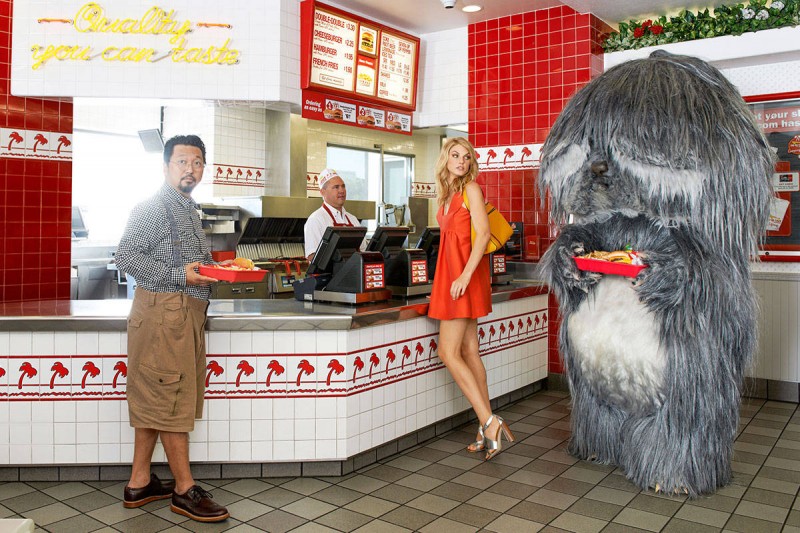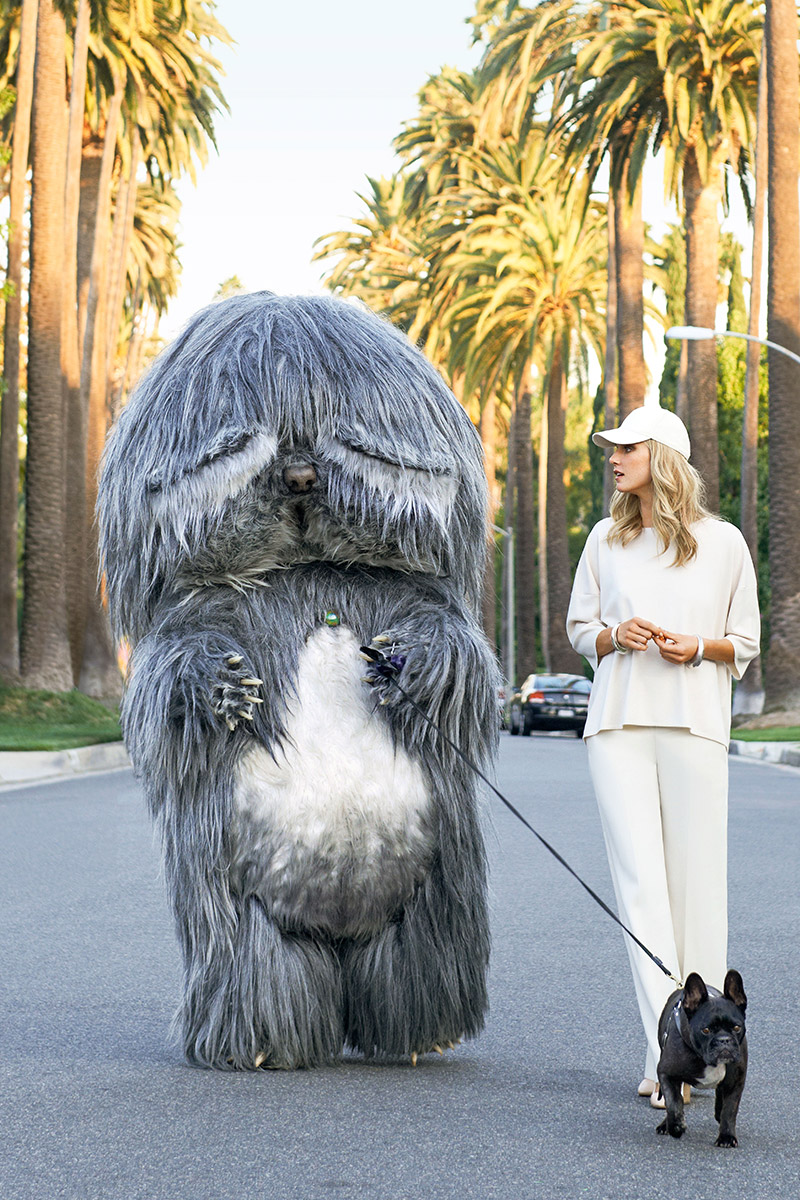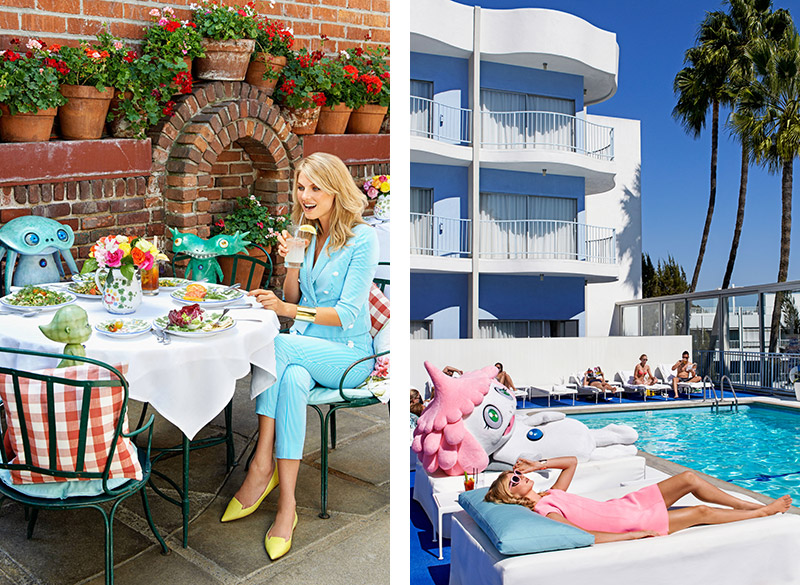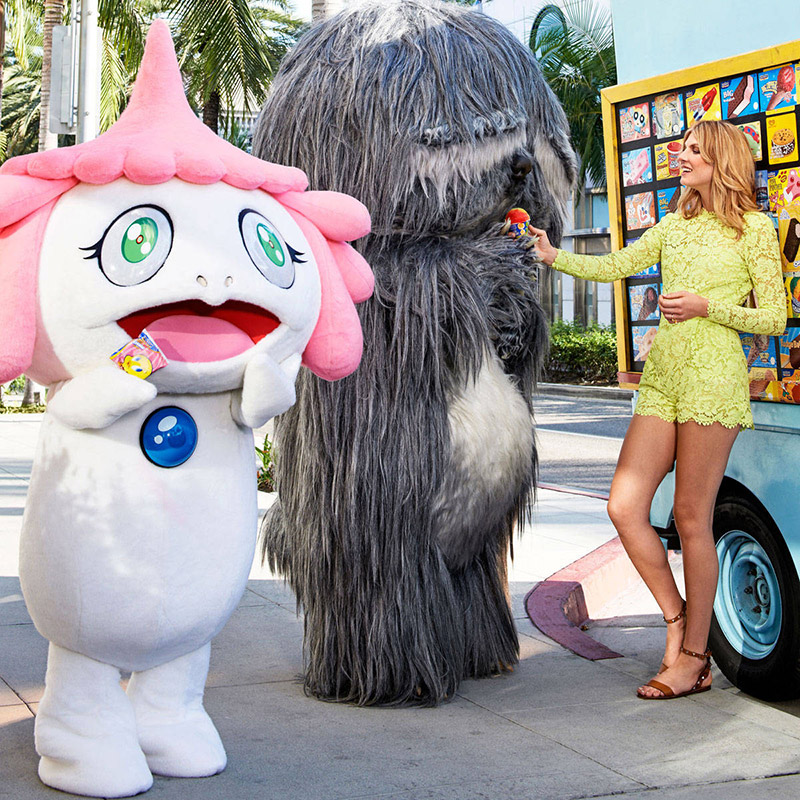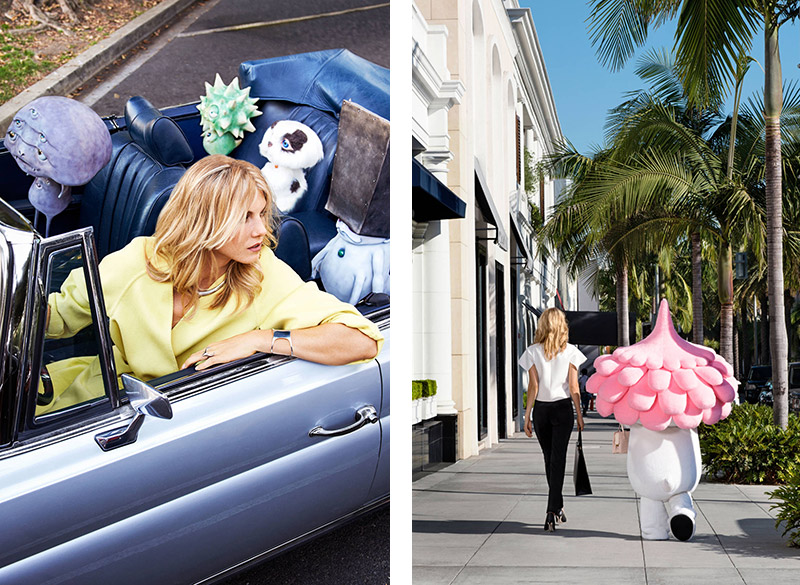Harpers Bazar Interview –
A Murakami piece is instantly recognizable—brightly colored, high gloss, childlike, futuristic. As a young man, Murakami was obsessed with anime and manga, and those qualities infuse his work today. Having achieved cult status in his native Japan, he was tapped in 2002 by Marc Jacobs to design a line of handbags for Louis Vuitton. It remains the most successful fashion-art collaboration in history. In 2007, a retrospective, titled “© Murakami,” opened at L.A.’s Museum of Contemporary Art, and in 2010 he became only the third contemporary artist to have a solo exhibition at the Château de Versailles. His cultural currency is global and inclusive, encouraging young artists through his art fair, Geisai, as well as children and their imagination in his new feature film, Jellyfish Eyes. Murakami may call his style “superflat,” referring both to his technique and to postwar Japanese culture, but in the art world he’s a superhero.
Laura Brown: When did you know you’d become not just “big in Japan” but a huge voice in the cultural world?
Takashi Murakami: I actually feel like the phrase “big in Japan” is not appropriate for me. The reason is that there are more people who sympathize with my practice in America than there are domestically in Japan. In Japan I am famous in certain special circles—mainly as someone who is trying to break down and enlighten the conventions of Japanese art. Rather than a big figure, I guess you could say I’m more of an influential minority symbol.
LB: How do you use that voice now?
TM: In Japan I focus mostly on sending messages through Twitter, trying to spread my minority way of thinking. And what is that way of thinking? Something that, in the West, is generally considered a given—that to create art, we must study history and from that context try to envision the future. In Japan the majority way of thinking is that art is, and should be experienced as is, and that any preconceived ideas will only get in the way.
LB: What inspired you to make Jellyfish Eyes? Why a “monster” movie?
TM: The inspiration was a manga called GeGeGe no Kitaro. When I was six it was the first manga I ever had my parents buy for me, and that experience accidentally formed the basis for the rest of my life. It was a completely chance encounter, so there’s nothing I can do to escape it.
LB: Who is your favorite creature, and why? If you were one of your creatures, which one would you be?
TM: That would be Oval—a pitiful creature who has no desire to be born into this world but is summoned anyway by scientists. In his surprise he reacts violently and is cast as a pariah, eventually being led back to the netherworld. Basically he is my self-portrait. Though I wouldn’t want to become him, this self-portrait, Oval, is my ultimate F.R.I.E.N.D.
LB: Jellyfish Eyes deals with how the younger generation communicates. How do you capture that?
TM: In fact, the children in the story are imbued with my own childhood memories. So in a sense I’ve set the landscape of the children of the ’60s within the everyday life of the present day.
LB: Considering all your accomplishments in 2-D (and you’ve called your style “superflat”), what inspired you to make a live-action film?
TM: In the past I was unable to create a narrative, so I’d given up becoming a filmmaker. But since then I’ve been a radio personality and given speeches, which means I’ve had a lot of opportunities to speak in front of others. In other words, the act of speaking has been a natural practice in the act of crafting a story; the tales I want to tell now come to me. However, I am still lacking in the grammar necessary to tell stories in a cinematic format— I hope to in the future.
LB: How was the experience of directing a film versus your usual artistic method? Which do you prefer?
TM: The breadth of collaboration required was a bit too much for me at first, but I had a supportive group of producers, and as we devoted time to clearing each point one by one, I grew to enjoy it. The world of film as a collective artwork expanded for me, and the production itself became its own drama, packed with emotions. I had so much fun, I could hardly contain myself.
LB: Would you ever want to make a film that was more rooted in reality?
TM: I have this idea for a sweet comedy about death. A middle-aged author of e-books, with middling sales, retreats deep into the mountains of Japan to build a grave for his recently deceased father. After getting scammed out of all of his money, he falls into despair, but for some unknown reason he is visited by a savior in the form of a middle-aged woman. And then his divorced wife from 10 years ago appears unexplainably too. Then this young woman with whom he spent a single night in a club many years ago is being treated for an incurable disease in the mountainside sanatorium, and she comes to him for emotional support. I’d love to do that story.
LB: One of your most famous collaborations was with Marc Jacobs for Louis Vuitton. Now that he has left the house, would you like to collaborate with him again?
TM: The credit for the success of the Louis Vuitton Multicolore project belongs to Marc Jacobs. He was the creative director, and I followed his direction. A single lifetime is not enough to express the gratitude I have to him for making it into a collaboration with such impact. If Marc were to ever call on me again, I would rally to the task in an instant.
LB: Is there another designer you would be interested in working with?
TM: Well, it’s not really a designer, but for the past 10 years, over 95 percent of the shoes I have worn have been Vans sneakers. So I’d like to try a collaboration with Vans sometime. Who knows?
LB: What’s your order at In-N-Out?
TM: Cheeseburger and fries. The problem whenever I come to America is that the hamburgers are so delicious, I end up eating one every two days and fattening myself into a round ball.
LB: What are your favorite and least favorite things about American culture?
TM: What I like about America is that when you strive to have the world’s best, you are surrounded by a mentality that gives you the best preparation for getting it, and it is possible to achieve the world’s highest standard in creative expression. And when you do reach the world’s highest standard in creative expression, people here will give you your proper due. I also like the fact that it is the most advanced nation in terms of its space program. What I don’t like is that America’s reality is built upon the theory that it must always be at war.
LB: What’s next? Can you give us any clues on your next project?
TM: Jellyfish Eyes … Part 2! I also feel like it’s about time I stirred things up in New York again, something I haven’t done in a while.
LB: What’s your fantasy project?
TM: Some form of a collaboration with J.J. Abrams.


